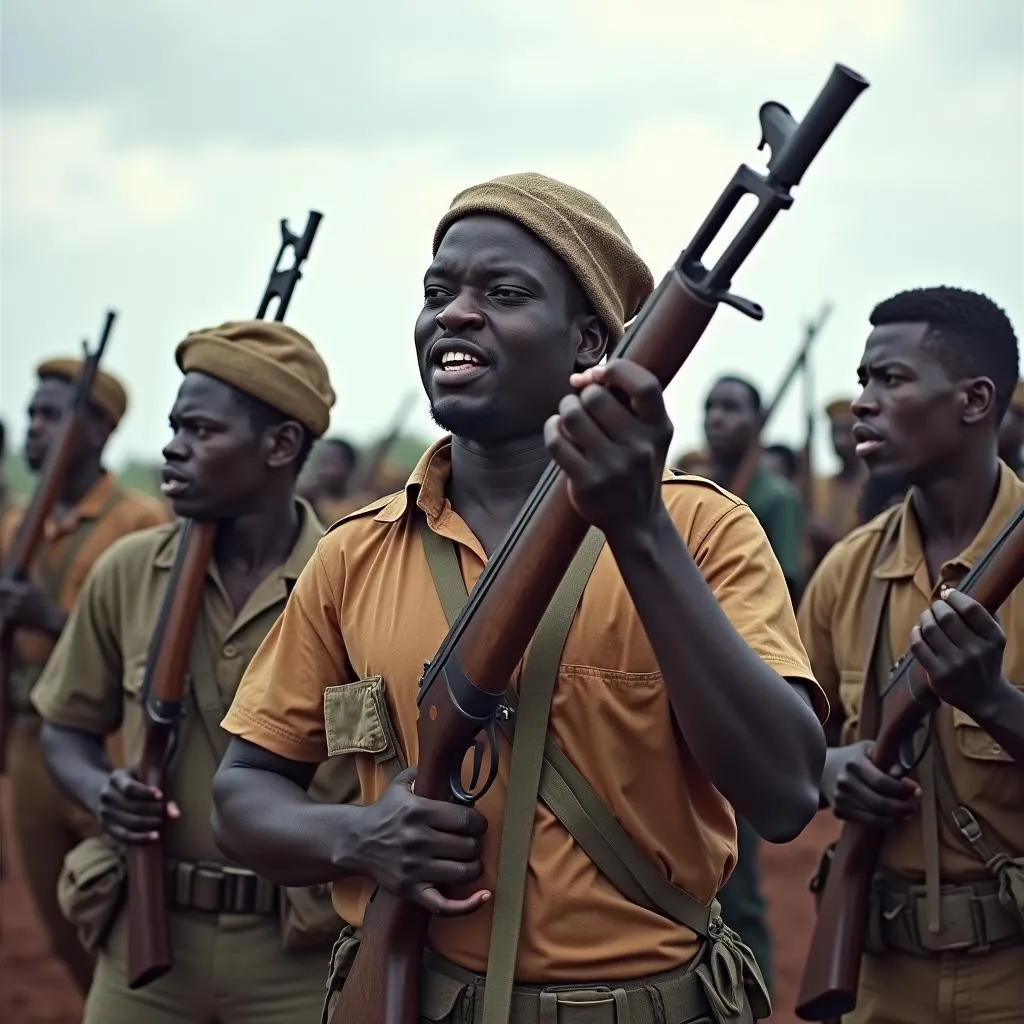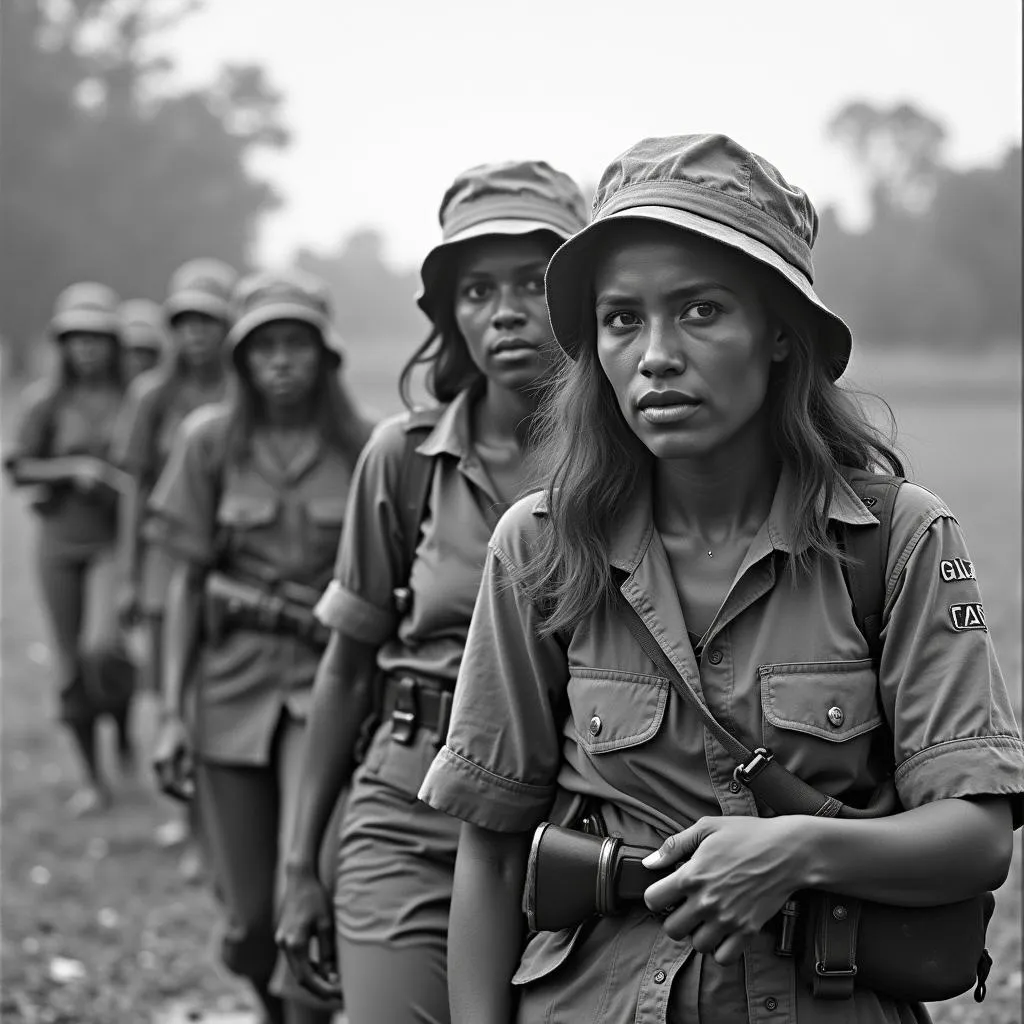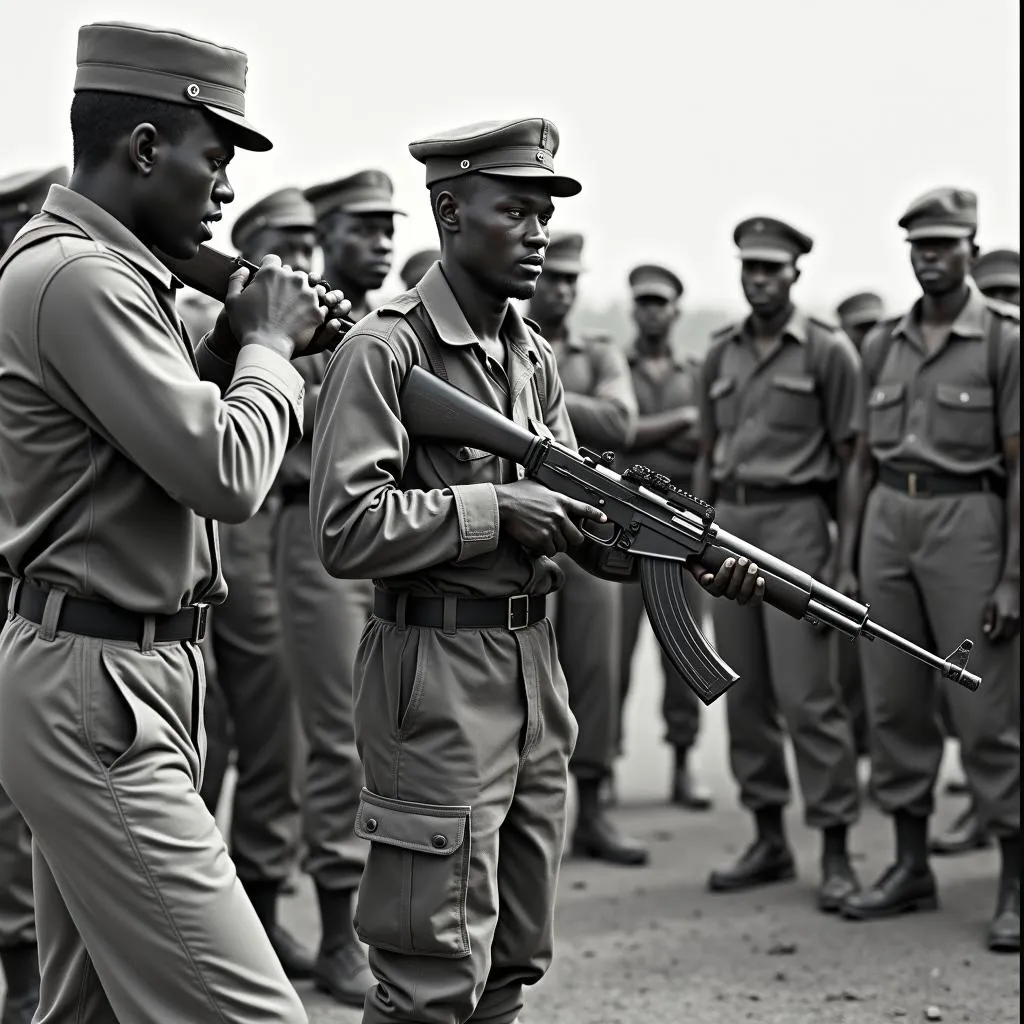African Freedom Fighters Photos: A Glimpse into the Struggle for Liberation
The fight for freedom and independence in Africa was a long and arduous journey, fueled by the courage and determination of countless individuals who dared to stand up against colonial oppression. These individuals, often referred to as freedom fighters, played a pivotal role in shaping the destiny of their nations, leaving behind a legacy of resilience, sacrifice, and unwavering commitment to self-determination. Today, their stories and images serve as a powerful reminder of the struggles endured and the triumphs achieved in the quest for African liberation. This article delves into the significance of photographs depicting African freedom fighters, exploring their historical context, their impact on the struggle, and their lasting importance in preserving the memory of those who paved the way for a free Africa.
Capturing the Spirit of Resistance: The Power of Photography in the African Liberation Struggle
The rise of photography during the colonial era provided an unprecedented opportunity to document the lives and struggles of the African people. Beyond mere documentation, photographs became a powerful tool in the fight for freedom, serving as a visual narrative of the injustices endured and the resilience displayed by the colonized. These images served multiple purposes, ranging from raising awareness about the plight of the African people to inspiring solidarity and galvanizing support for the liberation movements.
 A Photo Depicting African Freedom Fighters in the 1960s
A Photo Depicting African Freedom Fighters in the 1960s
For instance, photographs depicting iconic leaders such as Nelson Mandela, Kwame Nkrumah, and Jomo Kenyatta, often captured during rallies, speeches, or moments of struggle, became symbols of resistance and inspiration for generations to come. These images transcended geographical boundaries, reaching audiences far beyond the borders of Africa, bringing international attention to the struggle for liberation.
Beyond the Iconic Portraits: Uncovering the Stories Behind the Faces
While the photographs of renowned freedom fighters hold immense significance, it is equally important to recognize the contributions of countless individuals who may not have achieved widespread recognition but played crucial roles in the liberation struggle. From the courageous women who provided logistical support, medical care, and vital information to the young men and women who risked their lives in armed resistance, these individuals embody the collective spirit of the fight for freedom.
 A Group of African Women Engaged in Guerrilla Warfare
A Group of African Women Engaged in Guerrilla Warfare
 African Freedom Fighters Training for Combat
African Freedom Fighters Training for Combat
Photography serves as a powerful tool in uncovering these untold stories, providing glimpses into the day-to-day realities of the struggle. Images depicting freedom fighters in training, engaging in guerrilla warfare, or participating in underground movements offer a visceral understanding of the sacrifices made and the courage displayed during this turbulent period in African history.
Preserving the Legacy: The Importance of Archival Photographs
The significance of photographs depicting African freedom fighters lies not only in their historical value but also in their ability to transmit the spirit of the liberation struggle to future generations. These images serve as a tangible link to the past, allowing us to connect with the sacrifices made and the victories achieved in the fight for freedom.
As Dr. Amina Salim, a renowned historian and expert on African liberation movements, aptly stated: “Photographs are not merely images; they are windows into the past, allowing us to witness the struggles, triumphs, and resilience of those who paved the way for a free Africa.”
By preserving and sharing these images, we ensure that the legacy of the African freedom fighters lives on, inspiring future generations to fight for justice, equality, and self-determination. These photographs serve as a powerful testament to the human spirit’s indomitable will to overcome oppression and achieve freedom.
FAQs
1. Where can I find photographs of African freedom fighters?
Photographs of African freedom fighters are readily available online, in various historical archives, museums, and galleries dedicated to the African liberation struggle.
2. What are some of the most iconic photographs of African freedom fighters?
Some of the most iconic photographs include images of Nelson Mandela during his imprisonment, Patrice Lumumba addressing the United Nations, and Kwame Nkrumah declaring Ghana’s independence.
3. What is the significance of photographs depicting women in the African liberation struggle?
Photographs depicting women in the African liberation struggle highlight the crucial role they played, often risking their lives to provide support, medical care, and intelligence to the fight for freedom.
4. How can I contribute to preserving the legacy of African freedom fighters?
You can contribute to preserving the legacy by supporting organizations dedicated to archiving and sharing photographs of the liberation struggle, engaging in educational initiatives about African history, and sharing these stories with others.
5. Are there any online resources dedicated to African freedom fighters?
Yes, there are many online resources dedicated to African freedom fighters, including websites, documentaries, and social media platforms.
6. What are some other ways to learn about the African liberation struggle?
In addition to photographs, you can learn about the African liberation struggle through books, documentaries, memoirs, and oral histories.
7. How can I access historical archives related to the African liberation struggle?
Historical archives related to the African liberation struggle are often housed in universities, museums, and national libraries.
8. What are some notable examples of photographs depicting African freedom fighters?
Some notable examples include images of:
- Nelson Mandela during his imprisonment on Robben Island
- Kwame Nkrumah at the declaration of Ghana’s independence
- Patrice Lumumba addressing the United Nations
- Jomo Kenyatta leading the fight for Kenyan independence
- Amílcar Cabral leading the liberation movement in Guinea-Bissau
- Samora Machel during the Mozambican liberation struggle
- Steve Biko advocating for Black consciousness in South Africa
9. Where can I find more information about African freedom fighters?
You can explore further information through:
- Websites dedicated to African history and liberation movements
- Online databases of historical photographs and documents
- Libraries and archives specializing in African studies
- Educational institutions offering courses on African history
- Documentaries and films focusing on the African liberation struggle
10. What can I do to learn more about the stories behind these photographs?
To delve deeper into the stories behind these photographs, consider:
- Researching the historical context of the images
- Seeking out interviews and biographies of the individuals depicted
- Exploring primary sources such as letters, diaries, and speeches
By delving into the historical context and personal stories behind these photographs, we can truly appreciate the sacrifices made by African freedom fighters and their enduring legacy.

